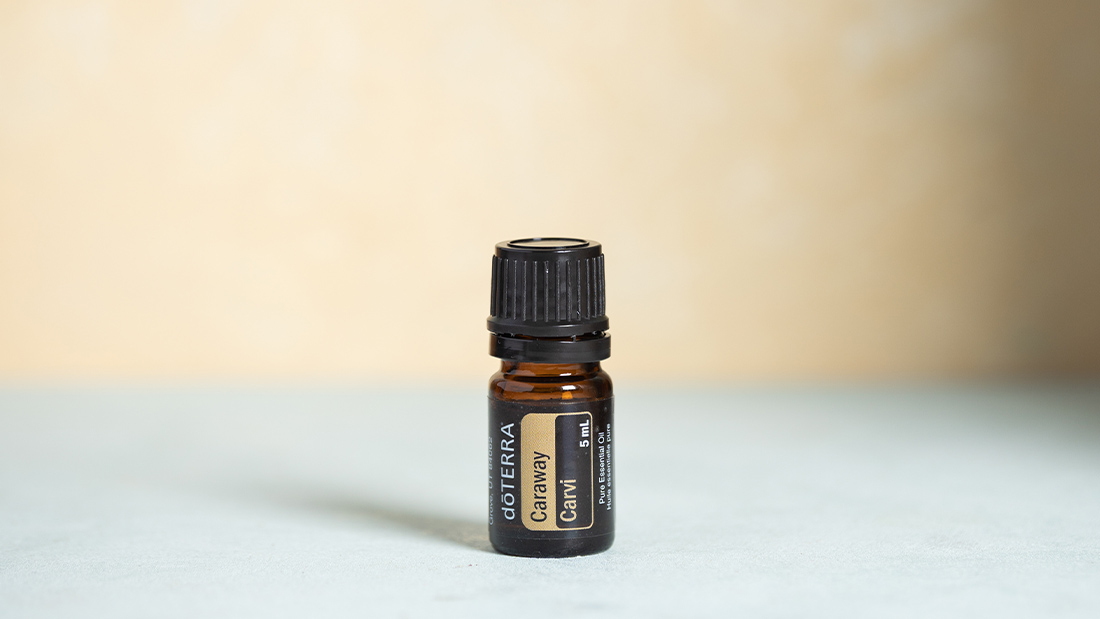Origin: a Latin derivative
meaning "Gift of the Earth."
Caraway Oil Uses and Benefits

Caraway Product Description
Make way for Caraway! Caraway essential oil comes from the caraway plant, a member of the carrot family and a cousin to dill, fennel, anise, and cumin. Caraway seeds may be small, but these tiny packages yield an essential oil bursting with compounds that offer a range of powerful properties. The distinct aroma comes from D-Carvone, which makes the raw seeds the star flavor of dishes like Bavarian-style sauerkraut, rye bread, and German sausages. Next is limonene, a constituent commonly found in citrus oils that’s known for its cleansing properties. This makes Caraway essential oil an ideal tool for oral care and keeping teeth looking clean.
Caraway Uses and Benefits
- Apply one drop of Caraway oil to your toothbrush when brushing teeth both morning and night to help maintain a clean mouth.
- Add one drop Caraway oil and one drop Clove oil to water and use as a daily mouth rinse
- Support a soothing abdominal massage by including Caraway oil for a gentle aroma.
- Diffuse three to four drops for a sweet, calming aroma perfect before or during a meal.
- Add one drop Caraway oil and one drop Lavender oil to warm bath water for a uniquely relaxing aroma.
Fun Fact
Fossilized caraway seeds have been found in Stone Age dwellings, suggesting that humans have used the seed for at least 8,000 years. The ancient Egyptians are also known to have used caraway in herbal preparations.
Plant description
The caraway plant grows in grasslands and cultivated fields native to Europe, Asia, and northern Africa. It’s also known by several other names, such as meridian fennel, Persian cumin, or European caraway. The plant looks like fennel with clusters of small, white flowers in a flat-topped flower head, and grows approximately 24 inches tall. A biennial plant, caraway generally begins blooming and producing seeds in its second year. The long and tiny seeds are then collected, crushed, and transformed into Caraway essential oil through steam distillation.
Oils that blend well with Caraway
Caraway oil blends well with herb and citrus oils, such as Roman Chamomile oil or Bergamot oil, as well as other spice oils such as Fennel oil, Cardamom oil, Ginger oil, and Coriander oil.
Cautions
Possible skin sensitivity. Keep out of reach of children. If you are pregnant, nursing, or under a doctor’s care, consult your physician. Avoid contact with eyes, inner ears, and sensitive areas.



